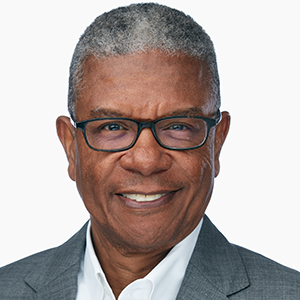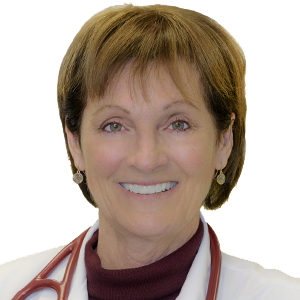
Continuing Certification Could Play Large Role
As the American Board of Medical Specialties (ABMS) Member Boards aim to reduce health care disparities and inequities, continuing certification could serve as a driver to accelerate their mitigation, according to speakers at ABMS Conference 2021’s opening plenary session.

David G. Nichols, MD, MBA, President and Chief Executive Officer (CEO) of the American Board of Pediatrics (ABP), opened the session entitled Addressing Health Care Disparities and the Role of the ABMS Community by citing persistent health disparities in the care and outcomes for children, and more broadly, people of color. As an example, the mortality rate for children of color from COVID-19 is two to three times higher than that of white children.
Following the COVID-19 pandemic coupled with the reckoning following George Floyd’s murder, ABP volunteers became even more engaged regarding health disparities, Dr. Nichols said. With input from volunteers, which currently number more than 400, the ABP Board of Directors developed an action plan around diversity, equity, and inclusion (DEI) in December 2020. The plan calls for:
- Improving child health equity
- Addressing possible bias in ABP’s exam processes
- Supporting a diverse pediatric workforce
- Fostering greater DEI among ABP appointees
- Enhancing DEI at the ABP campus
- Measuring ABP’s efforts
- Communicating these efforts through learning and sharing
Eliminating disparities starts with the training programs. “Upon graduation, pediatricians should have the skills and tools to be anti-racist, wherever they practice,” he said. This can be achieved through entrustable professional activities (EPAs), which serve as an assessment framework that begins with desired patient outcomes, in this case, that all patients will have equitable care and outcomes, as well as equal opportunities at optimal health.
Specifically, EPA #14 evaluates health strategies and quality improvement (QI) methods to promote health and address racism, discrimination, and other contributors to inequities among pediatric populations. Competencies required to address this EPA include practice-based learning and improvement, professionalism, and systems-based practice. These may include demonstrating cultural competence, working with professional teams, and identifying systems errors.
In the practice environment, ABP offers continuing certification credit for lifelong learning and improving health and health care to pediatricians who participate in DEI-focused improvement efforts, such as collecting race and ethnicity data. “It is impossible to address health care disparities without being able to measure their existence, so we want to incentivize the data collection process,” he said. ABP recently introduced a QI module on food insecurity. ABP also has embedded race and ethnicity questions in its applications to receive credit for QI initiatives. A new Question of the Week, an ABP online lifelong learning self-assessment tool, asks about care of the transgender child.
Dr. Nichols urged ABMS and individual Members Boards to establish a learning network to eliminate health care disparities, citing the Vermont Oxford Network, which has been able to eliminate health care disparities for premature African American and Hispanic infants after a decade of concentrated effort. Another learning collaborative called Solutions for Patient Safety has prevented harm in 15,000 children and saved more than $300 million for participants and involves essentially every children’s hospital in America. He proposed establishing Solutions for Patient Equity, a learning collaborative in which all hospitals and providers in America promote equitable care for children and adults. “I believe this is within our capability and ABMS could be an important driver of this process,” Dr. Nichols concluded.
Aligning QI Goals with Solutions

Rahul Koranne, MD, MBA, FACP, President and CEO of the Minnesota Hospital Association (MHA), discussed how hospitals and health care systems across the state are working to reduce health inequities by aligning QI goals with solutions to reduce health care disparities. On a statewide level, MHA coordinates data collection, patient safety and QI activities, educational events, and meetings with lawmakers on DEI topics.
Because social factors can have a significant impact on overall health, a few years ago MHA collaborated with the Minnesota Department of Health and Human Services and other state agencies to determine key social influencers of health. Transportation, housing instability, food insecurity, race, ethnicity, language, and mental health and addiction were among the top ones. MHA established a three-pillar strategy to impact these areas: education, advocacy, and process improvement.
MHA also participated in the Centers for Medicare & Medicaid Services Partnership for Patients Hospital Improvement Innovation Network Health Equity Affinity Group. They developed a health equity organizational assessment roadmap, outlining evidence-based recommendations and standards for developing prevention and QI programs that align process improvements with outcomes data. The road map reflects published literature and guidance from relevant professional organizations and regulatory agencies, as well as identifies proven practices.
For the past nine months, MHA has been promoting this roadmap, which Dr. Koranne described as a checklist of best practices, and resources during educational events for its members across the state. Early adopters of the best practices used the Plan-Do-Check-Act (PDCA) cycle to determine how well these practices worked. But instead of the “Act” phase, MHA uses an “Adjust” phase, in which the roadmap is adjusted, if necessary. Some best practices may be eliminated, others may be added, and others may be shortened. Additionally, MHA added a “C” at the end of the PDCA cycle for celebration. “At the end of every improvement cycle, we recognize all the wins that our clinics, emergency rooms, and hospitals have had, even if they did not obtain positive outcomes,” he said.
As an ABMS Portfolio Program™ Sponsor, MHA designed a QI module around the roadmap. To date, physicians and physician assistants at about 40 health care systems are participating in the module to earn continuing certification credit.
MHA has found that these QI initiatives look different, depending on the type of organization. Larger organizations may need to focus more on the impact of race, ethnicity, and language, whereas a small, rural hospital may need to address transportation, food insecurity, or socio-economic disparities, Dr. Koranne noted. “But that’s the beauty of the organizational assessment and QI module, both allow the care teams to work on what is important in their community and in their health system,” he said. Additionally, some MHA members have created food pharmacies by partnering with local farmers to address food insecurity while others have changed their menu options to address food insecurities and be more inclusive of all their patient populations.
On a parallel track, MHA has been collecting diversity workforce data. This year, MHA published an inaugural report on the health care workforce. “While the workforce trends in racial and ethnic diversity have definitely improved during the past decade, they haven’t improved as much as we would have liked,” he said. At MHA, the scientific method and data-led improvement are being used to address health inequities by tying QI goals with solutions that will hopefully result in positive outcomes for patients statewide, Dr. Koranne concluded.
AMA Toolkits Offer Solutions
Institutional racism continues today, stated Marie T. Brown, MD, MACP, Director of Practice Redesign at the American Medical Association (AMA). It may not be as blatant as when she and her colleague, Janet Y. Forbes, MD, were recruited to take over a retiring white physician’s practice until talks abruptly halted after the physician met Dr. Forbes, who is Black. He stated that his white patients did not want to be cared for by a Black physician.

Much of the racism she witnesses today is more subtle, such as receptionists racially profiling patients as they triage them based on language, zip code, and name, or calling an elderly Black woman, who is a retired general, by her first name while the elderly white man sitting next to her is referred to as “Mr.” Then there are the colleagues who have “closed practices” with an unwritten rule for exceptions and doctors who exclude insurance plans that represent a majority of people of color. “These microaggressions hurt us all,” she said.
The board certification process, especially continuing certification, could be used to address health care inequities and disparities, she stated. It begins by addressing false beliefs that impact health disparities. Dr. Brown cited a 2016 study that found many white medical students and residents hold false beliefs about biological differences between Blacks and whites. One of those false beliefs—Black people’s skin is thicker than that of white people—was deemed true by 33 percent of white trainees, who reported treating pain differently according to race. These falsehoods could be addressed by assessing and filling knowledge gaps, she said.
Next, Dr. Brown highlighted an open access AMA STEPS Forward™ toolkit that use a stepwise approach to address racial and health equity in the practice. The toolkit includes measures, guidance on how to collect data and complete a PDCA cycle, and additional resources. Collecting data can be as simple as asking the patients questions, such as how they racially identify themselves and the pronouns they use as well as what their experiences have been within the health care system, she explained. If physicians don’t have a plan to identify and reduce inequities, she said, they may be contributing to them. Another toolkit addresses social determinants of health. The physician selects a social need, such as food insecurity. The toolkit includes tools to capture and assess the data, and address the problem with resources, such as referrals to local food banks. For physicians who wonder how they will fit data collection into their routine workday, the toolkits provide examples of small-scale QI projects.
Access to health care is an equity issue and nowhere is it more apparent than in primary care, Dr. Brown noted. But much of a physician’s day is spent on unnecessary tasks, reducing time that could be spent with patients and contributing to burnout. She reviewed other AMA STEPS Forward toolkits that provide steps to improve workflow efficiencies, which can save three to five hours a day.
Dr. Brown encouraged the Member Boards to review the toolkits for ideas to embed in their continuing certification QI activities, refer them to board certified physicians, and even contribute to developing new toolkits. “The main driver of physician satisfaction is delivering quality patient care. Doctors are not afraid of long hours or hard work,” she said, closing out the plenary session, which was moderated by ABMS President and CEO Richard E. Hawkins, MD. “We are renewed when everything we do requires that medical degree and we’re working as a team.”
© 2021 American Board of Medical Specialties
